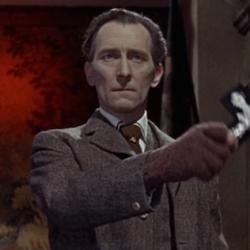Analyses of two scenes from The Thin Red Line in Steven Rybin’s Terrence Malick and the Thought of Film, Michel Chion’s The Thin Red Line, and Lloyd Michaels’s Terrence Malick illustrate the almost unfathomable density of Malick’s films.
In the first scene, Dale, one of the soldiers of C Company, is mocking one of the Japanese soldiers captured during the daring attack on a Japanese bunker. Dale has been pulling gold teeth out of dead Japanese soldiers, and he taunts the agonized soldier by pointing to birds of prey gathering around the corpses: “See those birds up there? They gonna eat you raw.” He dismisses the very humanity of the solider: “You mean nothing to me.”
The Japanese soldier responds, in Japanese, in words that are not translated in the subtitles. His response, though, shows that he understands what Dale is saying. As Michaels points out (74), the Japanese soldier tells Dale that he too shall die.
Already we have a densely layered scene: The clash and mutual incomprehensibility of two peoples, two peoples at war, divided by language. The inhuman cruelty of Dale in plundering gold from corpses, set against the abject terror of the Japanese soldier. Yet (in a Heideggerian touch)_the two are united in humanity by the certainty of death. Given their linguistic differences, they cannot bring their mortality into mutual understanding, but the same shadow lies over both.
The next time Dale appears, he has lost his swagger. As Rybin describes it: “Dale appears to have recognized the inhumanity of his own actions. Sitting alone in the rain during his company’s one-week leave after the battle (and placed by Malick in a long shot so as to emphasize his isolation), he contemplates the bag of teeth that he has removed from the corpses of Japanese soldiers. Recalling, in flashback, the earlier conversation with the prisoner, Dale weeps and throws away the bag, while Train’s voice-over appears once again, telling us the following: ‘War doesn’t ennoble men. It turns them into dogs. Poisons the soul.’ We hear, after this voice-over and as if cued by Dale’s flashback, the voice of the Japanese soldier from the earlier scene, intoning that Dale will also die. It is almost as if Dale could understand these foreign words now (and Train’s words as well); here, he perhaps recognizes the humanity of the Japanese soldier.”
So we have these layers: Visually, dale weeping in the rain, tossing aside his bag of gold teeth; the voice of another character speaking of the dehumanization of war, at precisely the time that Dale is making a step to return to the human race and recognize the Japanese as fellow creatures; and then the Japanese soldier’s words repeated, a reminder again that, humane or no, all human beings are united in the grave. The visuals do not match the voiceover in any straightforward way, but the juxtaposition is thematically appropriate, and profound.
At this very moment, Malick introduces a musical overlay, Charles Ives’s The Unanswered Question. The music begins with an undulating hum of strings, over which a trumpet plays, posing the question. The “answer” comes in the form of dissonant and asynchronous music, as if, Chion says, the rest of the music is deaf to the trumpet (10-12). The music puts the entire scene into the interrogative mood, and expresses in another way the inability of the Americans and Japanese to communicate of the human fate that they share.
All that, and then the rain: a cleansing baptismal shower, connected with a moment of penitence, that reunites Dale with his humanity and with other human beings.
As David Sterritt says of Tree of Life, Malick achieves the Wagnerian aim of Gesamtkunstwerk, “a work of art that incorporates all the arts on an equal and interactive basis.” Malick joins “framing and composition in conjunction with poetic language and dialogue, verbal and gestural performance, source music and underscoring, costume, architecture, and decor” (Film Quarterly 65:1 [2011] 52-7).










